Volvo Ocean Race: High-tech, high-stakes and high seas
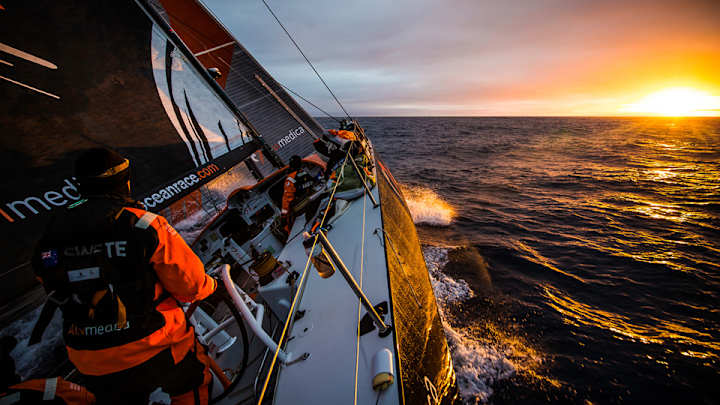
As he guided his high-tech 65-foot racing yacht over the equator in late October, charting a course for the tip of South Africa, Charlie Enright endured some good-natured ribbing from his veteran crew members.
“For me, personally, it was a first,” said the 30-year-old Enright, a native of Bristol, R.I., last week. “Crossing the equator is a right of passage, and to be able to do it on the first leg of the Volvo Ocean Race, on our way to Cape Town, with a great group of guys, will be something I remember forever.”
But the celebration of Enright’s new “shellback” status was brief. After all, his Team Alvimedica crew is in the midst of a demanding nine-month, around-the-clock, around-the-world sailing competition – the Volvo Ocean Race.
“The race has been as expected,” said Enright. “It’s been competitive, grueling, lengthy, and a test of mental toughness and focus.”
After launching from Alicante, Spain, on Oct. 11, the seven yachts competing in the Volvo are scheduled to arrive in Cape Town on Nov. 6, completing the first of nine legs.
“You have to expect the unexpected, and the elements are a real shock to your system,” said Enright. “Just in the first leg alone, we’ll leave in the Mediterranean, sail downwind in the trade winds until we get to the Doldrums, where it’s excruciatingly hot with very little wind. It’s our job to keep our focus and navigate across that desert, basically, until we get into the winds south of the Equator. By the time we’re hard grinding into South Africa, we should be experiencing winds of over 40 and sometimes 50 miles an hour, sea temperatures and air temperatures that numb your body and your mind.
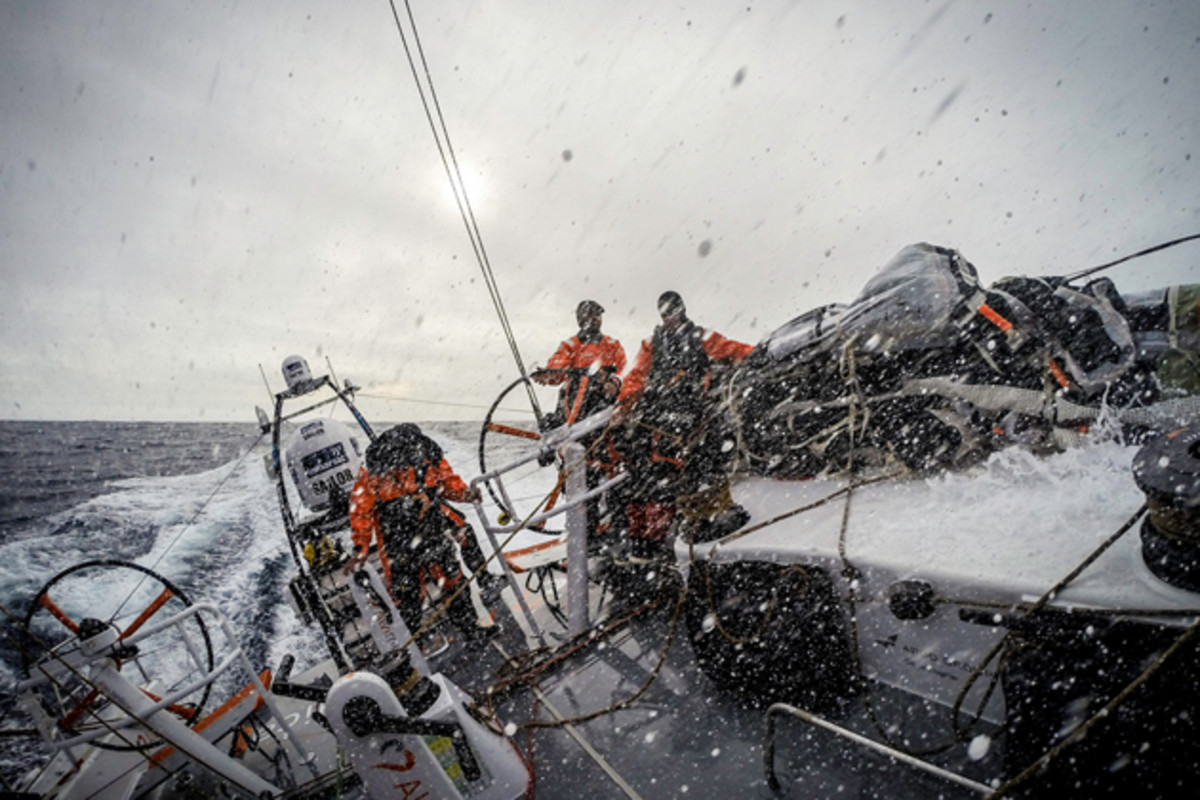
“It’s a 25-day leg,” he said. “You’ve got to pack for a sauna, and a chairlift.”
According to Mark Towill, one of Team Alvimedica’s two watch captains, the opening leg has lived up to its advanced billing.
“Leg One has thrown a bit of everything at us so far,” said Towill. “Light winds and tricky conditions leaving the Mediterranean caused numerous sail changes, and sleep was tough to find. A rough night in heavy upwind sailing followed by light air downwind sailing along the African coast kept the racing exciting. Lots of lead changes—the entire fleet within sight of each other the entire time—it was really a game of inches.”
For the uninitiated, the Volvo Ocean Race (formerly known as the Whitbread Round the World Race), held every three years, is actually nine races in one. Unlike cycling’s Tour de France, however, the final standings aren’t based on cumulative time. Instead, each boat is assigned a point value based its finish at the end of each leg (one point for first, two for second, and so on). The team with the lowest cumulative total is the winner.
Grueling yet addictive, cyclocross pushes boundaries of physical limits
“With nine legs, the best score you can possibly have is nine points,” said Enright. “It's like golf in that way.”
Of course, that’s about all the Volvo Race has in common with the knickers-and-9-iron set. Each leg features non-stop racing, with crewmembers on deck for alternating four-hour shifts. It is exhausting, both mentally and physically.
“This race is really a marathon,” said Towill. “But what makes it interesting is that, even though it's a marathon, it’s really a long sprint. We get position reports every six hours on where our competitors are, so we really live or die based on our performance over the last six hours. We do that for nine months. So there’s a constant desire to push the boat as hard as you can.”
Pushing the boat requires near-constant adjustments, from navigating weather patterns to trimming sails and repositioning all the on-deck equipment and crew. Each team consists of eight crew members, plus an on-board reporter who is allowed to pitch in with other chores—such as cooking and cleaning—but cannot help sail the boat.
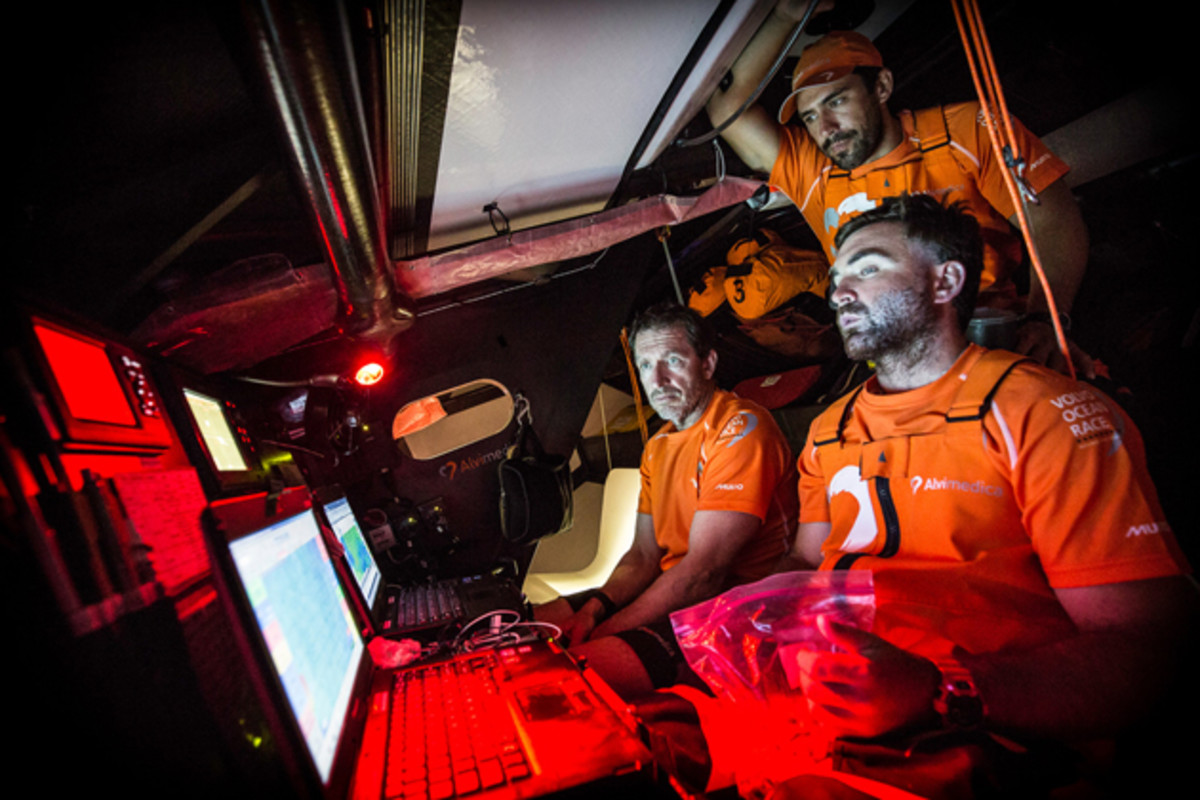
“It’s extremely physical, which people don’t realize,” said Towill. “The sails are quite heavy; it takes four or five guys to pick up one of the sails. We stack all of the sails, and all of the gear, the boom and the spares and the people, on the high side of the boat at all times, because that’s going to make the boat go faster. So every time we tack or jibe, or the conditions change, and there’s more wind or less wind, we’re moving all of the gear.”
However, that gear is specific to the boat, not the crewmembers. Each sailor brings aboard the bare minimum, in order to keep the boat light and fast.
“People think of sailing as having a cocktail at sunset. But it’s far from that,” said Towill, laughing. “We pack our whole life into a small, 40-liter dry bag. We’re wet and cold for weeks on end. We eat freeze-dried food, and there’s a desalinator for turning salt water into fresh water. And everything is extremely weight-conscious. There’s very little room for creature comforts.”
Being at the helm of a multi-million dollar racing yacht, in many respects, is similar to being at the helm of a multi-million dollar corporation. For Enright, the two jobs are one and the same.
Teton Gravity Research: A family affair for snowboarder Jeremy Jones
Together with Towill, a fellow Brown University alum he met while filming the Disney sailing project Morning Light, Enright choose a different course right from the start.
“The way Charlie and I put this together, and had the opportunity to participate in this race, is a bit unordinary,” said the 25-year-Towill, a native of Hawaii. “Most people our age, if you’re a professional sailor, you would put your head down, try to gain as much experience as possible, and hope to get picked up on one of these well-established teams.”
Towill credits his experience at Brown, where both he and Enright earned All-America sailing honors, with providing the framework for the syndicate behind Team Alvimedica—Oakcliff All-American Offshore Team.
“Instead, we went out and created our own team,” said Towill. “That’s sort of against the model. A place like Brown promotes that thinking, and encourages you to have a dream and explore it and do it.”
Similar to international cycling squads or NASCAR outfits, Volvo Ocean Race teams are private companies named after their chief sponsors. With a price tag of between $15 million and $40 million per team, sponsorship is critical. Enright and Towill launched their Oakcliff All-American Offshore Team in 2011, and then set about recruiting a title sponsor. They found a willing partner in Alvimedica, a medical device firm specializing in stents and catheters that is based in Istanbul, Turkey.
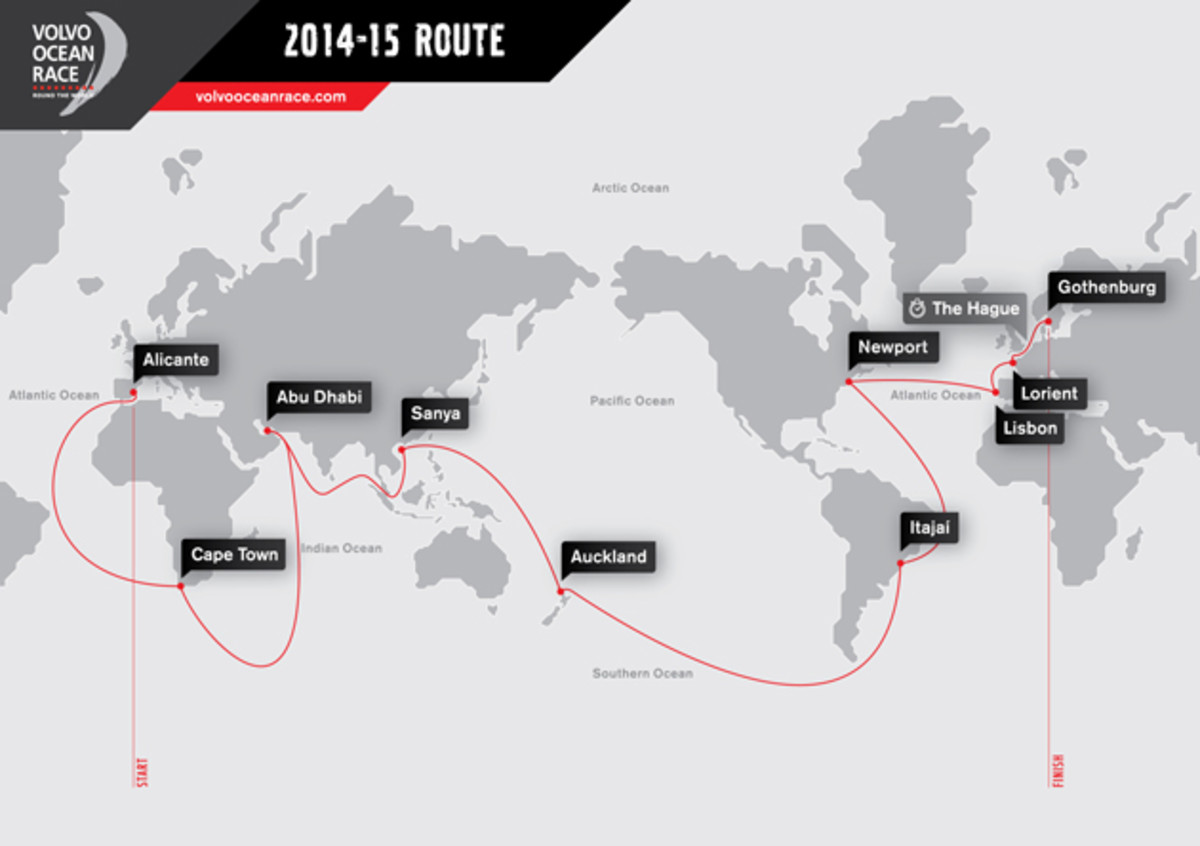
“They’re a very young company, in existence for seven years,” said Enright. “They’ve grown at a rapid rate, and they’re looking to expand their brand as well as their global. And they’re actually looking to expand into the United States, which is one of the reasons this sponsorship was a good fit.”
A two-week recess in each port separates the nine Volvo Ocean Race legs. Those breaks allow crewmembers to recharge their batteries, and give sponsors a chance to enjoy a hands-on experience with their investment.
“At each stopover, there’s an in-port race that doesn’t count for the overall, but is a way for sponsors to get their money’s worth,” said Enright. “Once the boats leave for Cape Town, no one will physically lay eyes on them until they get there four weeks later. So every stopover, they have an in-port race with corporate hospitality and VIP experiences for the public to see and watch them.”
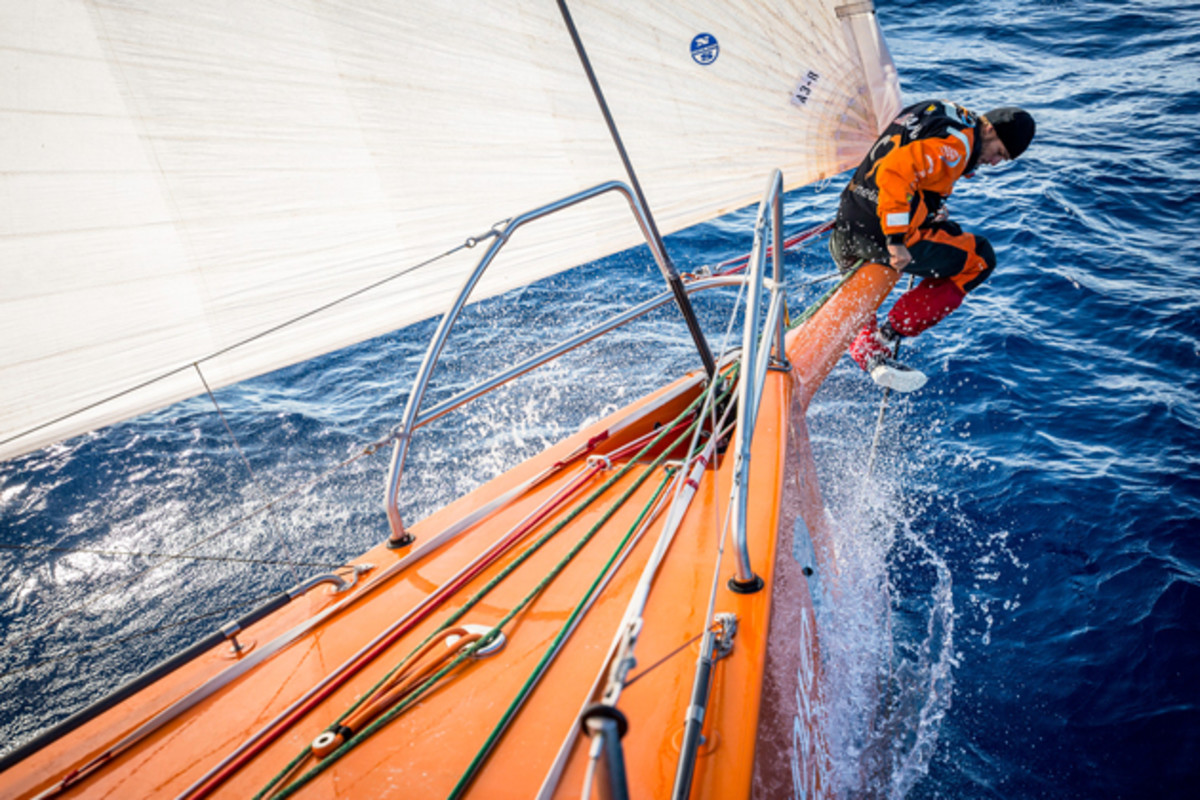
Adding to Team Alvimedica’s global flare is the composition of the crew. Though the only United States entry in the race, the team actually has members from New Zealand, Australia, Italy and France, as well as three sailors from the States. “We’re a very international crew,” said Enright. “And we’re the youngest team in the race, for sure, with an average age of 30.”
New this year, the Volvo Ocean Race features identical yachts, devised by Farr Yacht Design in the United States, and built by a consortium of four shipyards, with parts produced in France, Italy, and Switzerland, and assembled in the United Kingdom. The ultra-light yachts, said Enright, are “like a real Swiss Army knife,” each featuring a carbon composite hull, seven sails (built by North Sails of the United States), a 100-foot main mast, a canted keel, two daggerboards, and twin rudders.
“The one-design concept has made for very close racing,” said Towill. “For the first time in this event, every team has the exact same equipment, which has really put the race in the hands of the sailors, and not the designers. The [competitive] level is extremely high, and you need to push the boat 100 percent all the time.”
That puts added pressure on Enright’s crew. Though they won the in-port race in Spain, the members of Team Alvimedica know they’ll ultimately be judged by their final finish, in Sweden.
“For us, it’s about maximizing our potential,” said Enright. “We have all the tools we need to succeed. It’s just a matter of how much better, or faster, we can get between now and the finish. We have moments of brilliance, some great ‘scheds’—six-hour position reports—some good tactical calls, but we also have a lot we need to work on. Consistent improvement in our performance is our goal. If we can do that, results will come.”
Competitive sailing fans can follow the Volvo Ocean Race at volvooceanrace.com.
GALLERY: TEAM ALVIMEDIA ON THE VOLVO OCEAN RACE [FULL SIZE]
Volvo Ocean Race
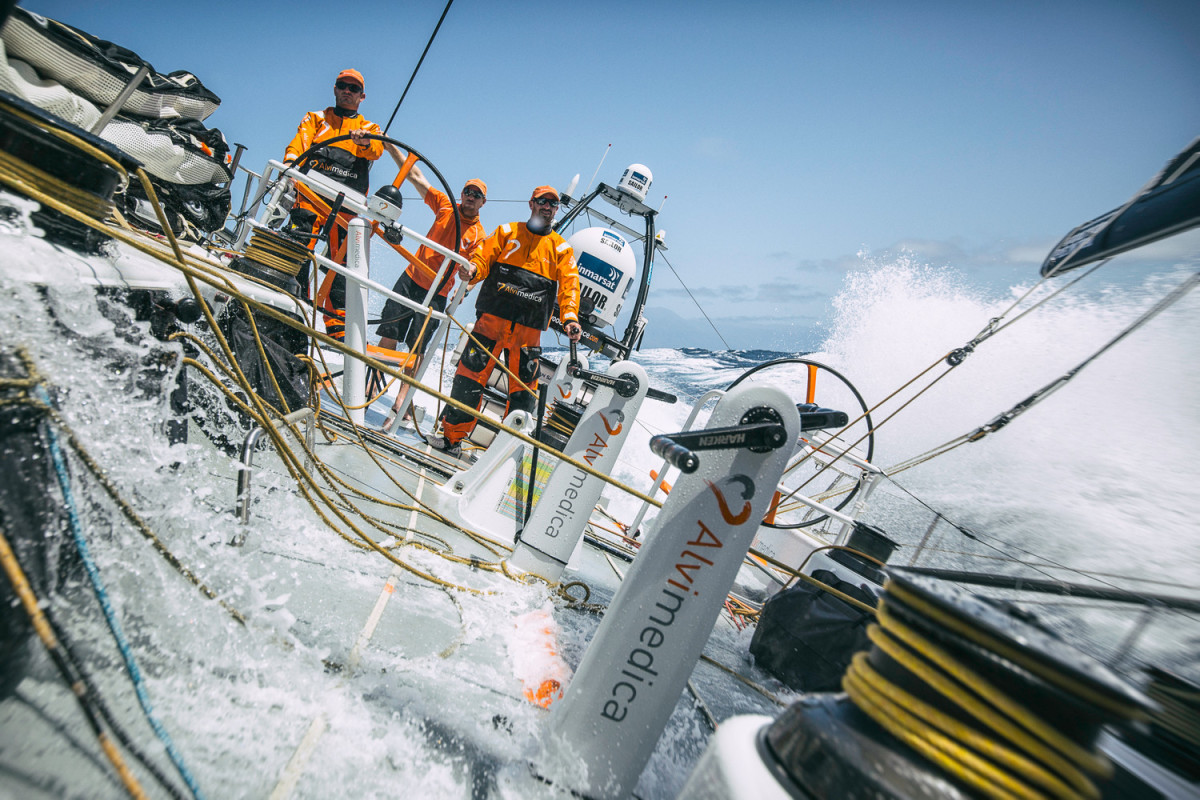
Day of the Cape Verdes transit and decision time for the Equator/Doldrums approach. Ryan Houston, Seb Marsset, and Dave Swete enjoying a final afternoon of fast Tradewind sailing on the way south towards the Equator.
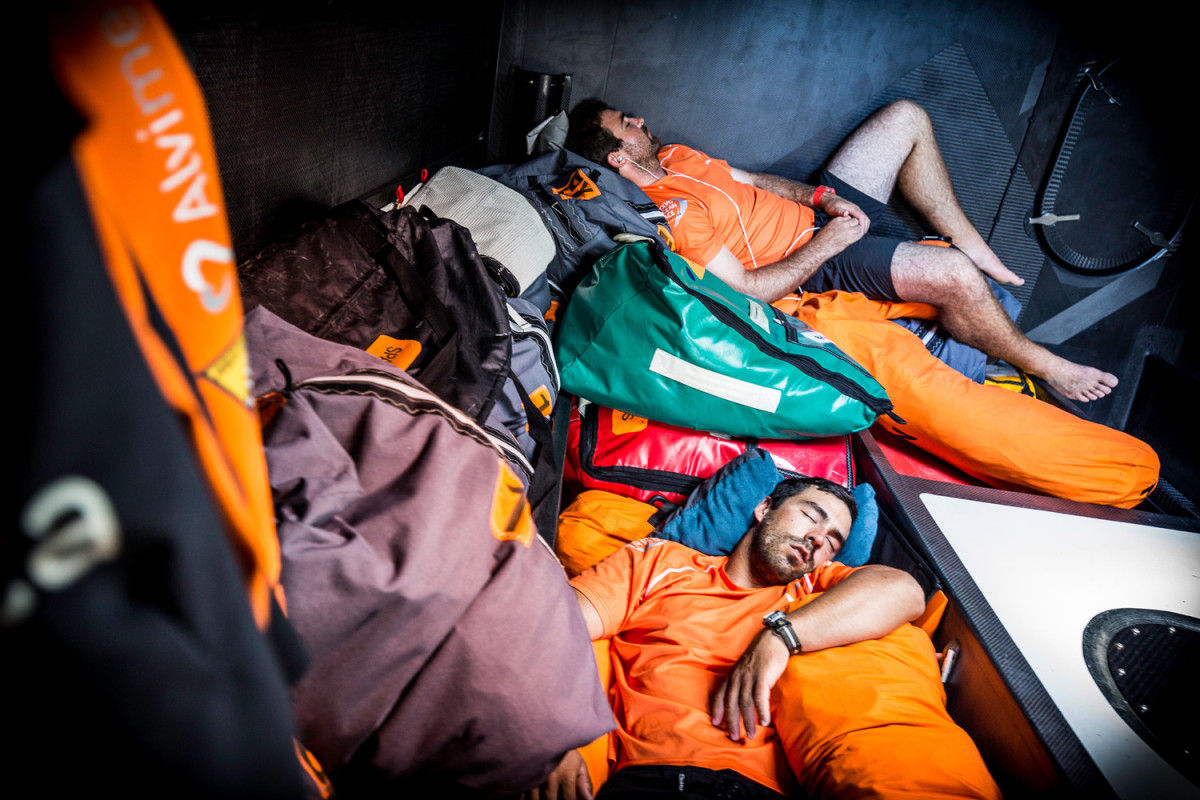
The third day in the clutches of the Doldrums brings no breaks for Team Alvimedica, still searching for consistent winds and a way south with the fleet. Charlie Enright (T) and Mark Towill (B) catch some sleep in the bow where weight is best kept in light winds.
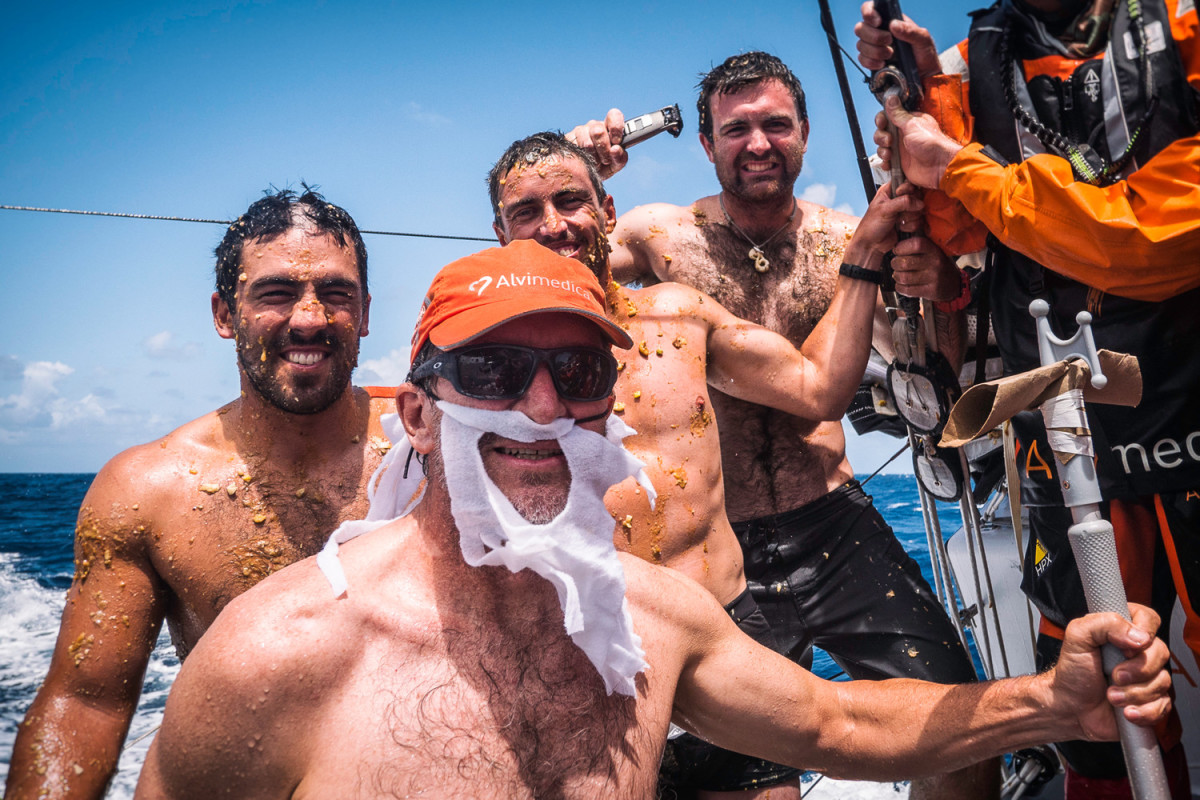
King Neptune makes a visit to Team Alvimedica to welcome Charlie Enright (R), Mark Towill (L), and Alberto Bolzan (M) into his domain for the first time.
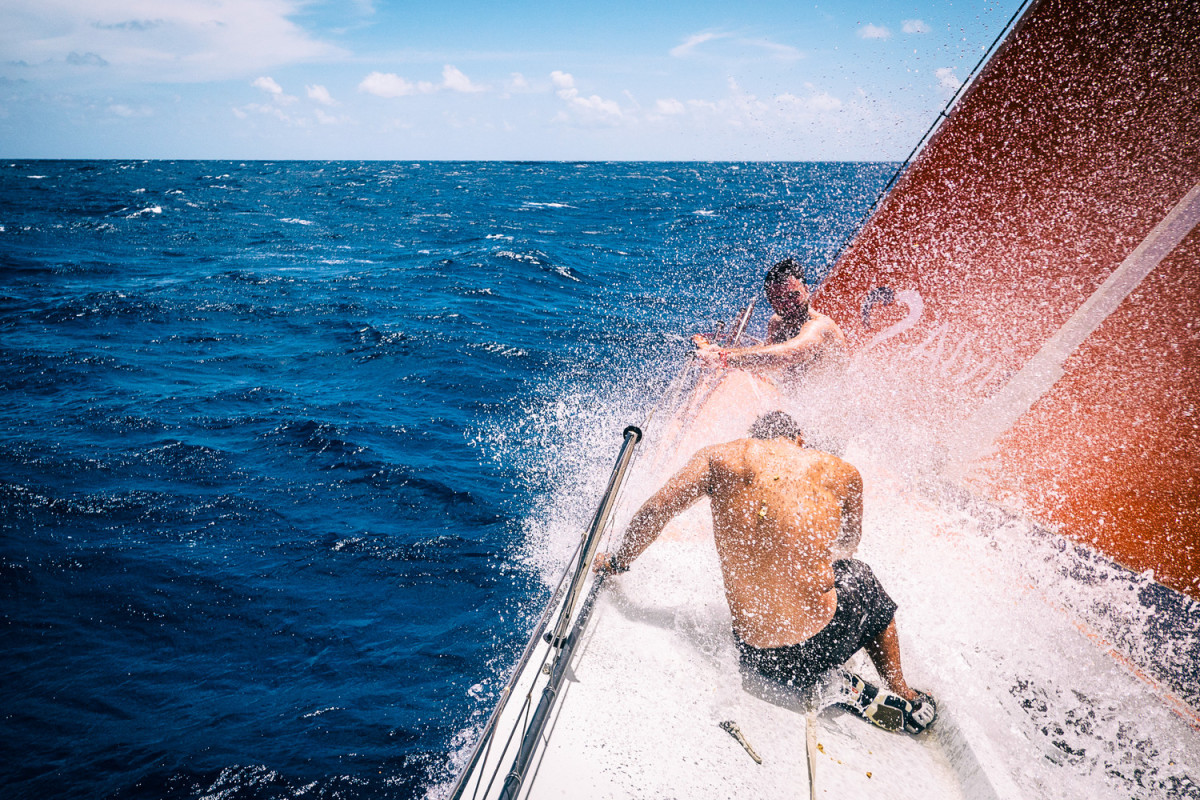
A full day of steady wind propels Team Alvimedica over the Equator at speed.
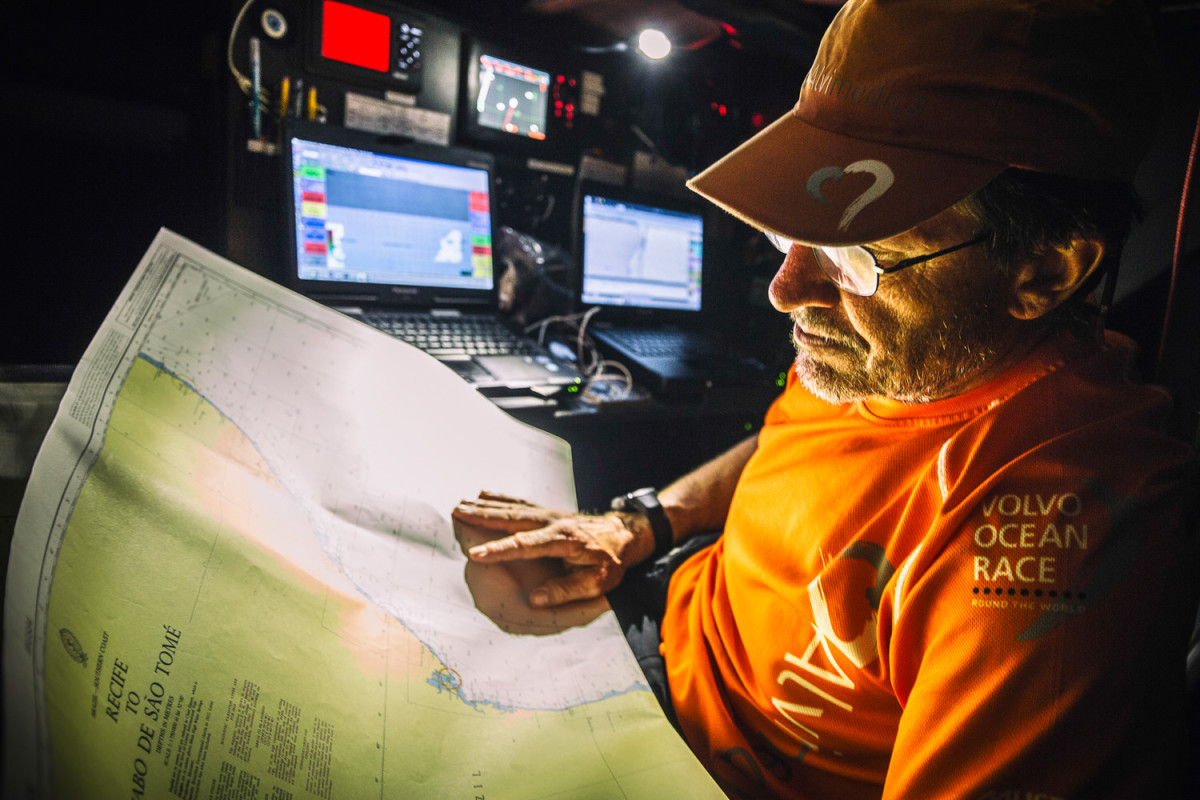
Navigator Will Oxley still carries traditional paper charts for every potential destination along the course around the world.
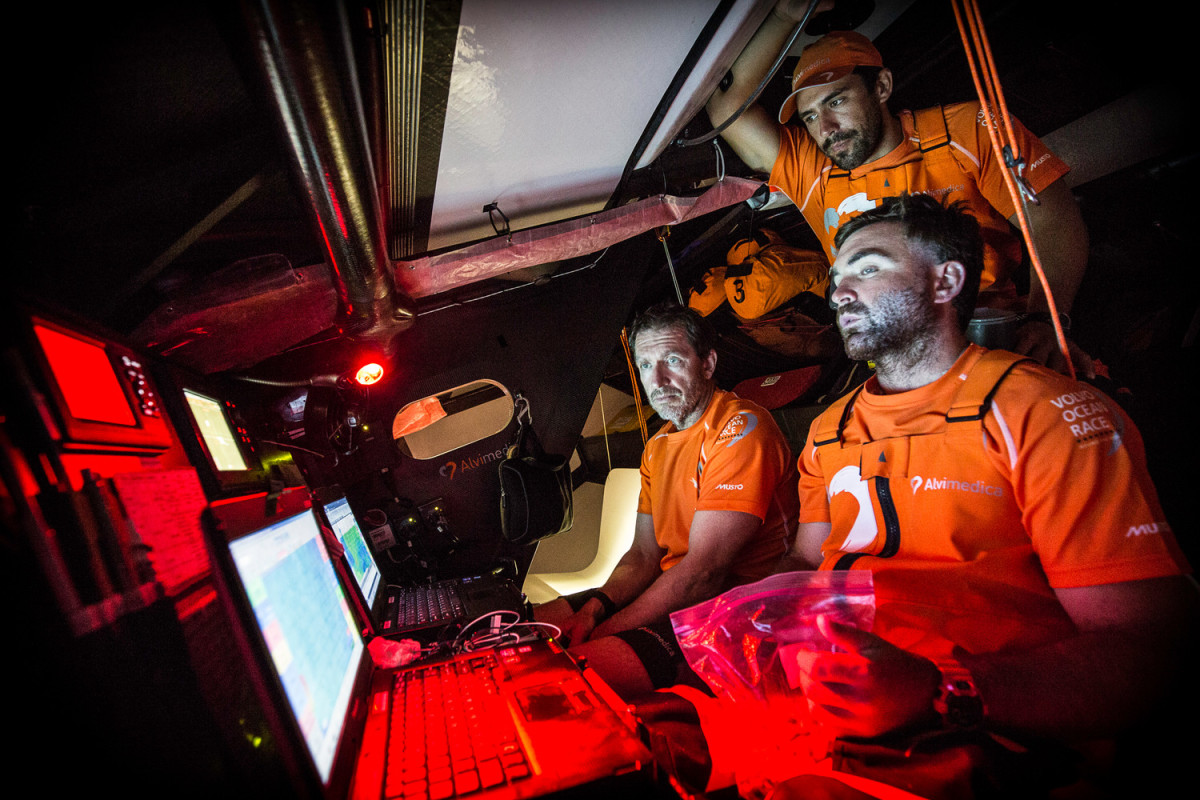
The brain-trust in the nav station: Will Oxley (L), Mark Towill (M), and Charlie Enright (R) dissect the latest weather information, crucial in determining the time to turn east for Cape Town.
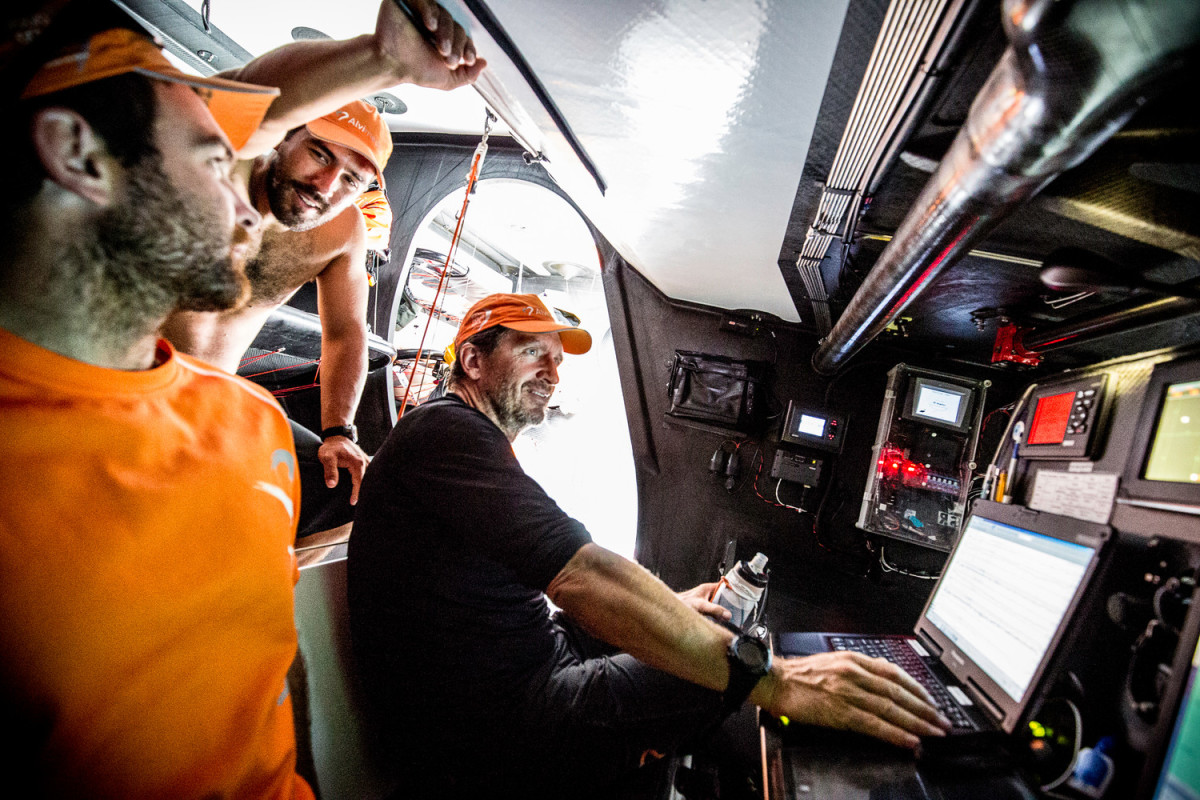
Skipper Charlie Enright (L), watch captain Mark Towill (M), and navigator Will Oxley (R) discuss the timing of the turn south.
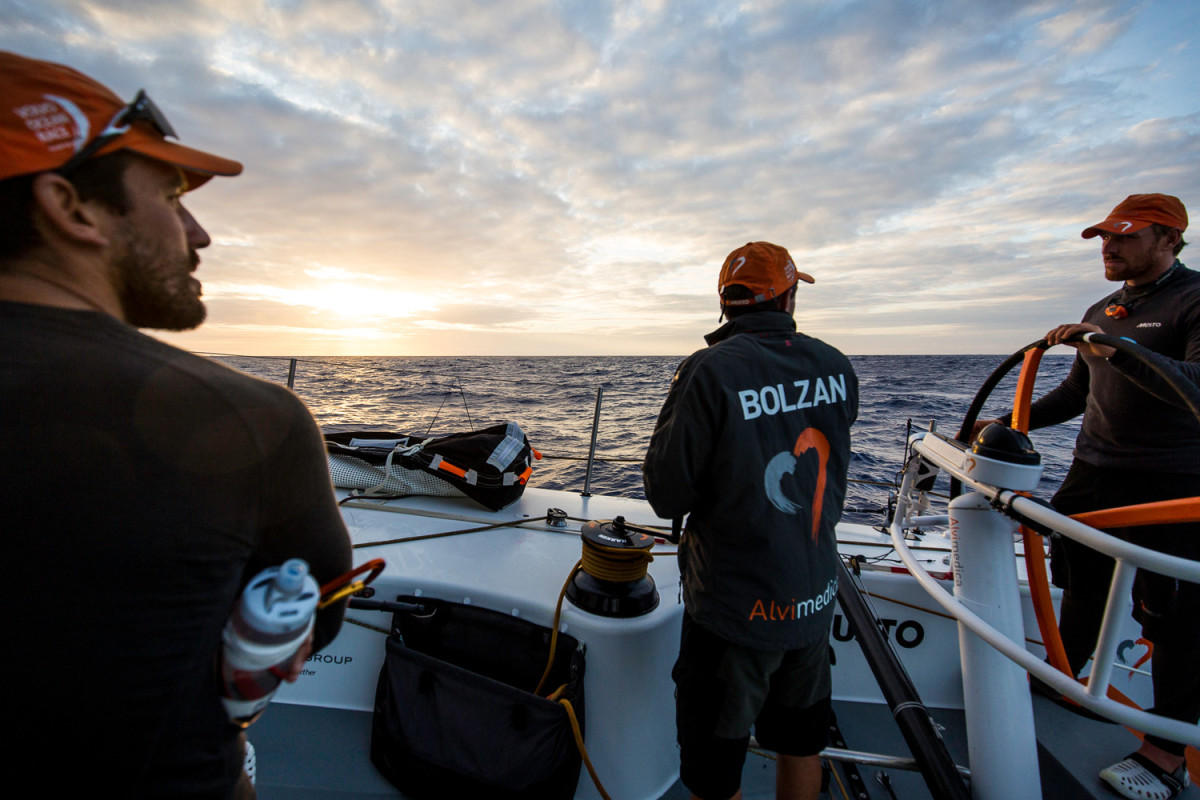
Mark Towill, Alberto Bolzan, and Dave Swete converse on deck as the sun sets on their watch.
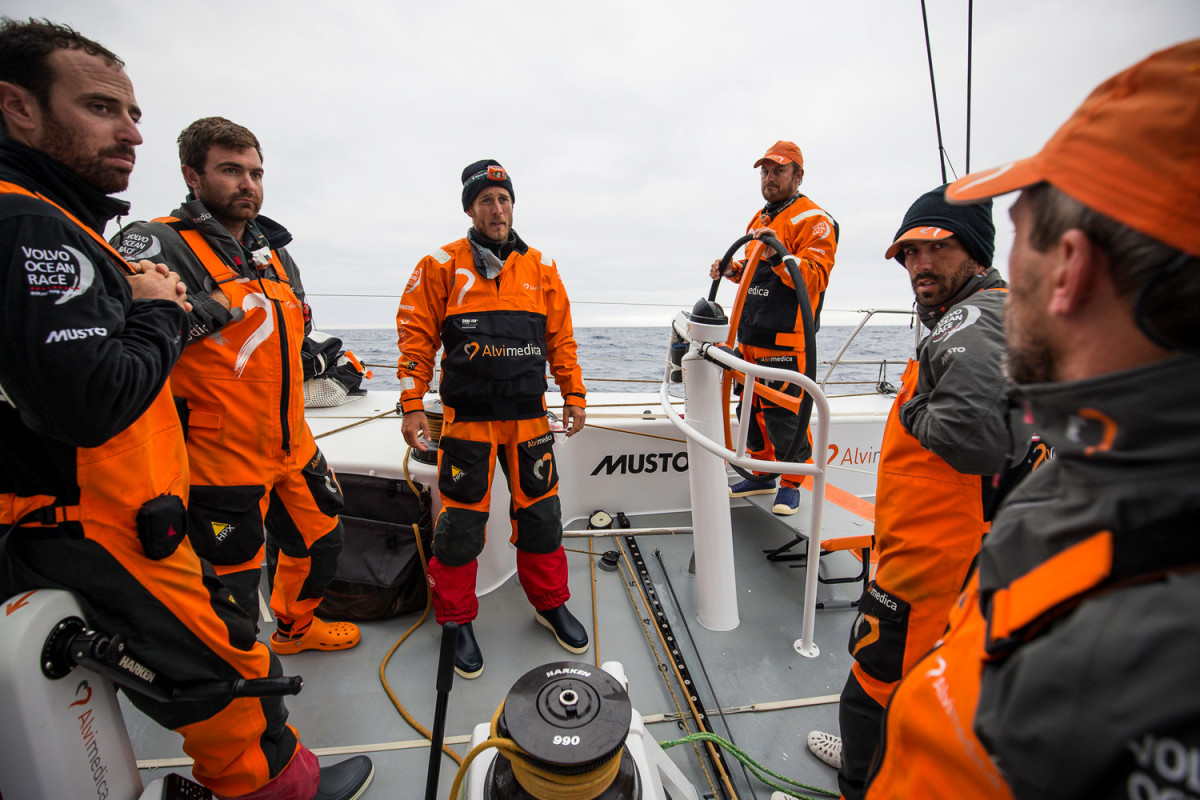
Temps drop abruptly for the beginning of Day 19, as the fleet sails due south looking for strong westerly winds to turn for Cape Town.
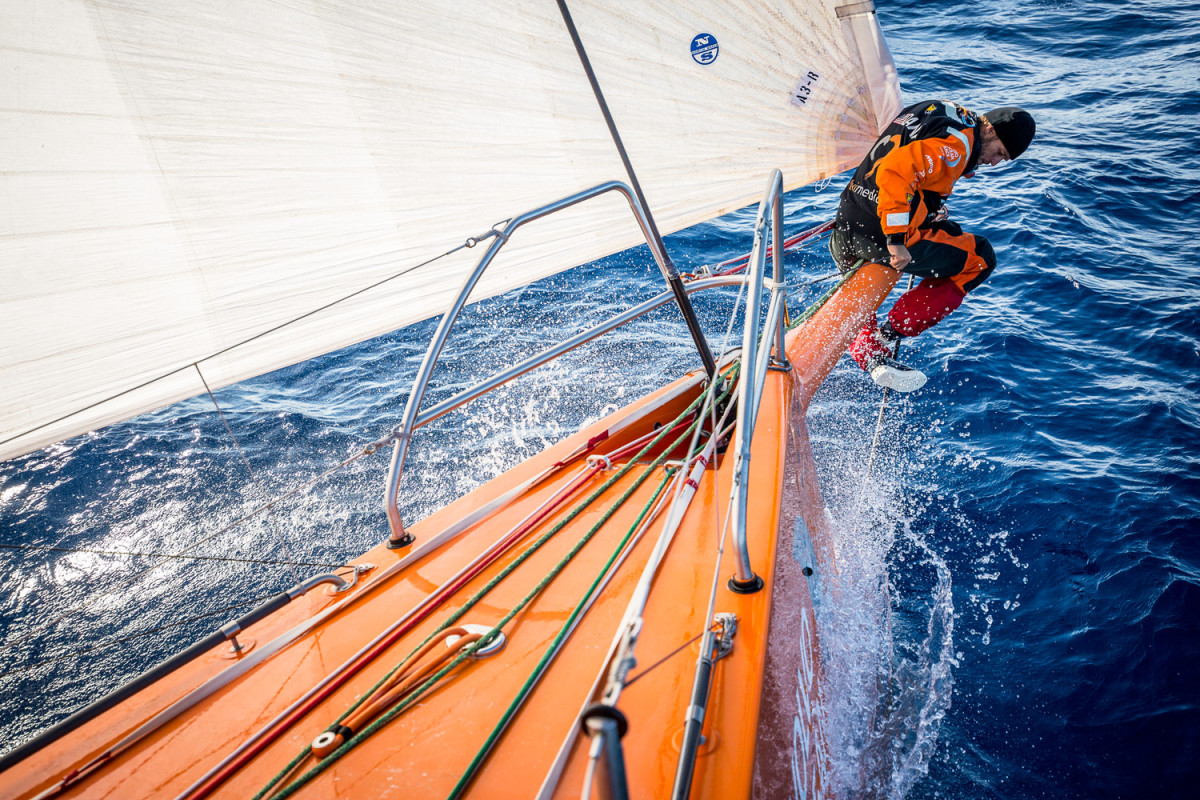
Nick Dana on the bowsprit looking for wear and tear while the weather is still calm.
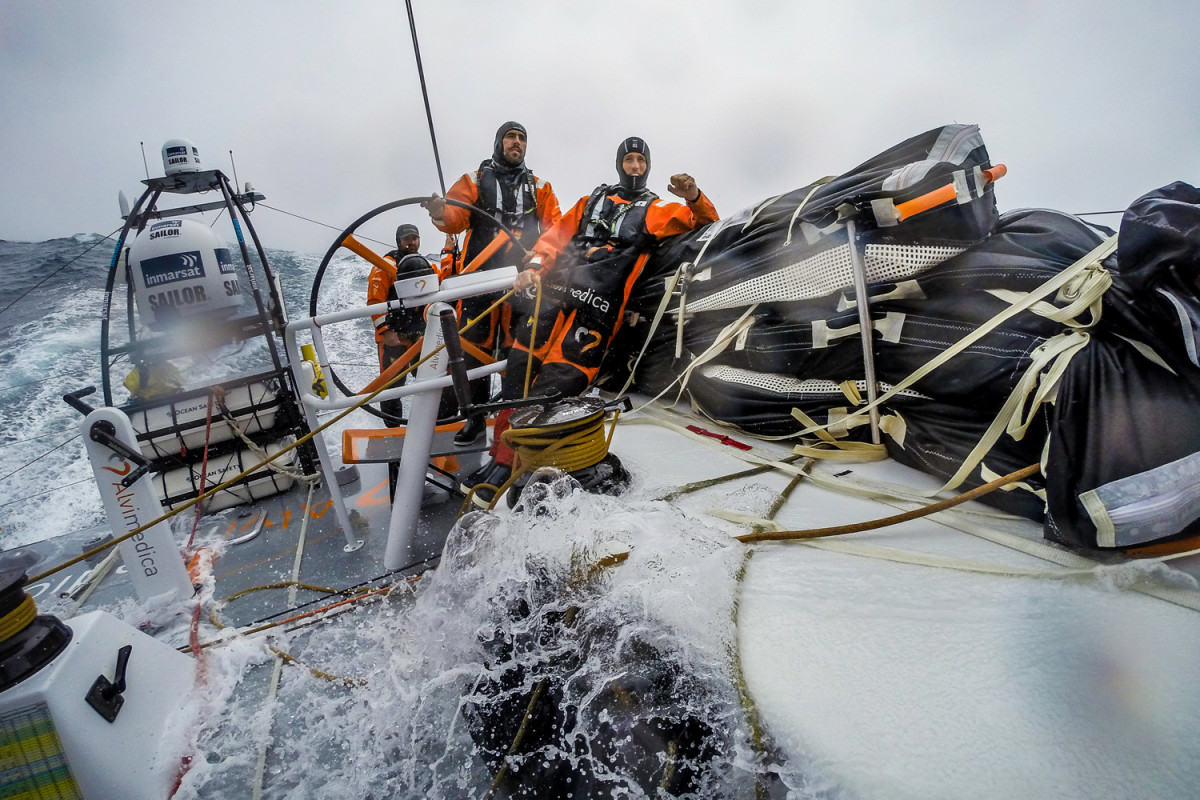
A 6 a.m. jibe east and an early build in windspeed keep Team Alvimedica on their toes with a week of hard sailing left until Cape Town.
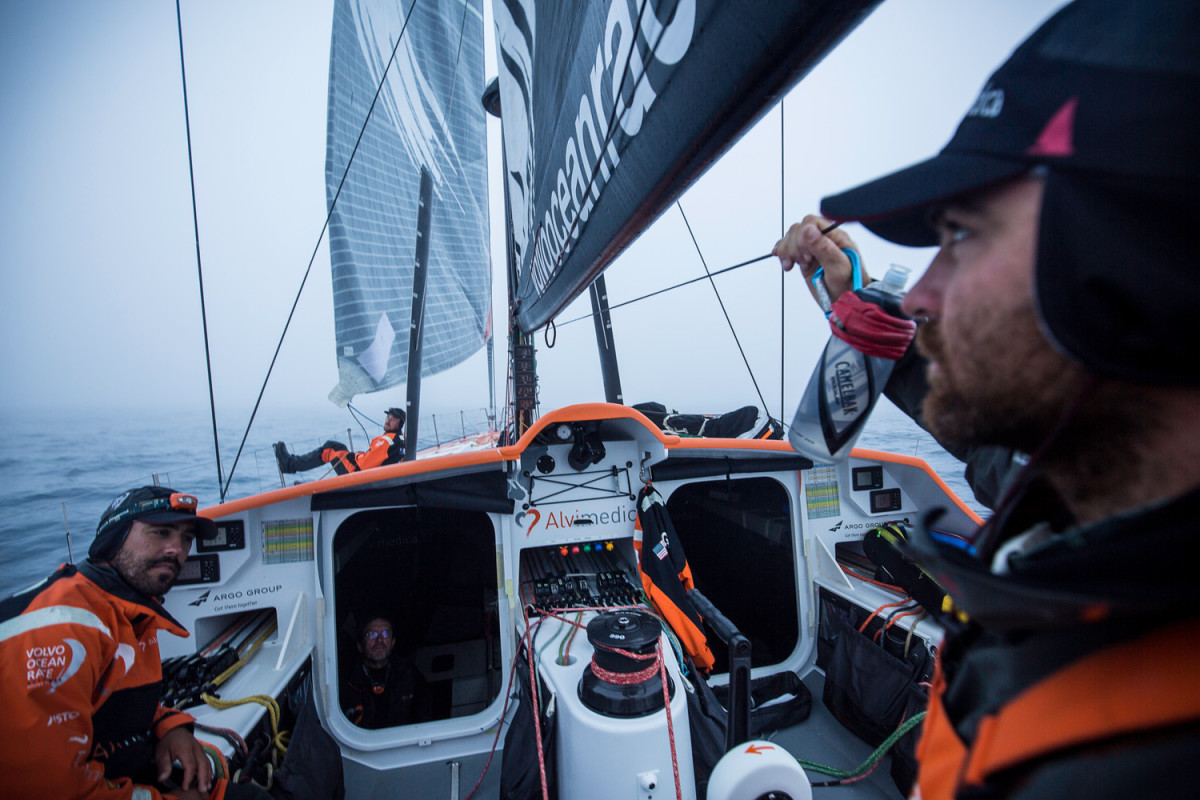
Winds lighten and the complicated road to Cape Town begins as the first High pressure system rolls through the fleet.
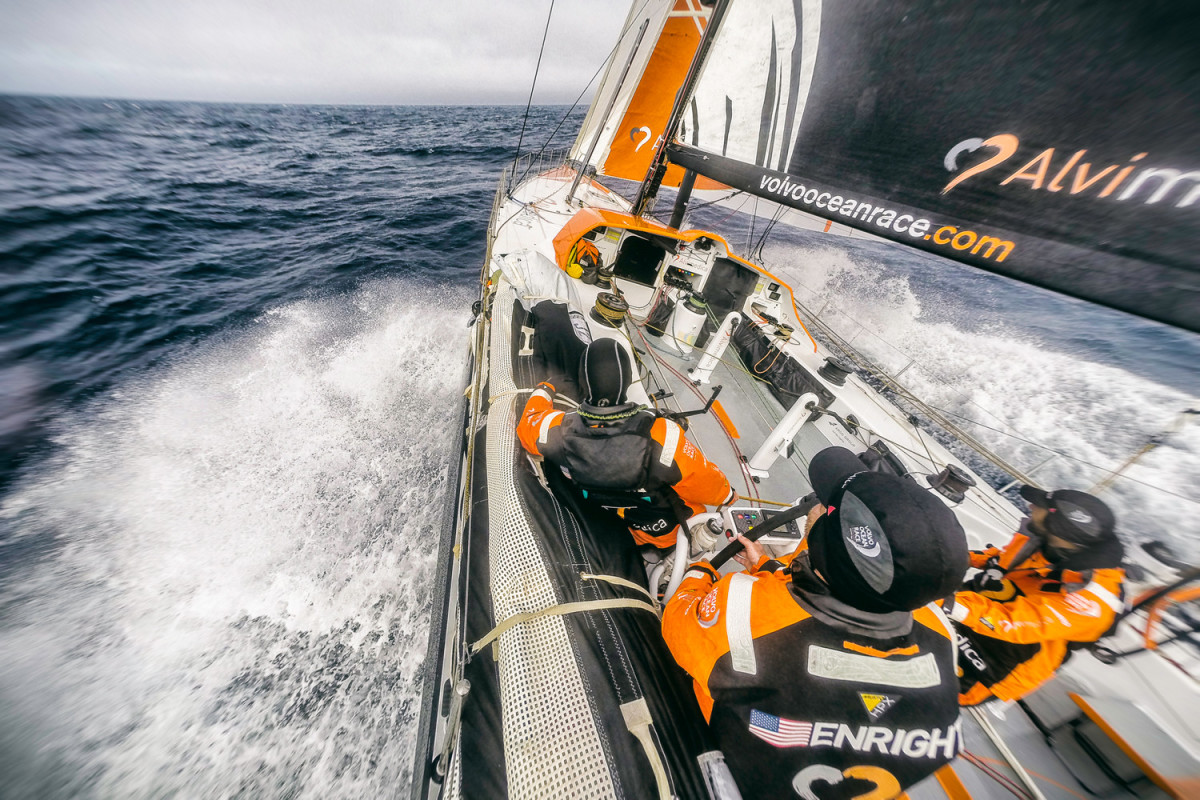
Leg 1 onboard Team Alvimedica on day 22 with a full sail on the way east.
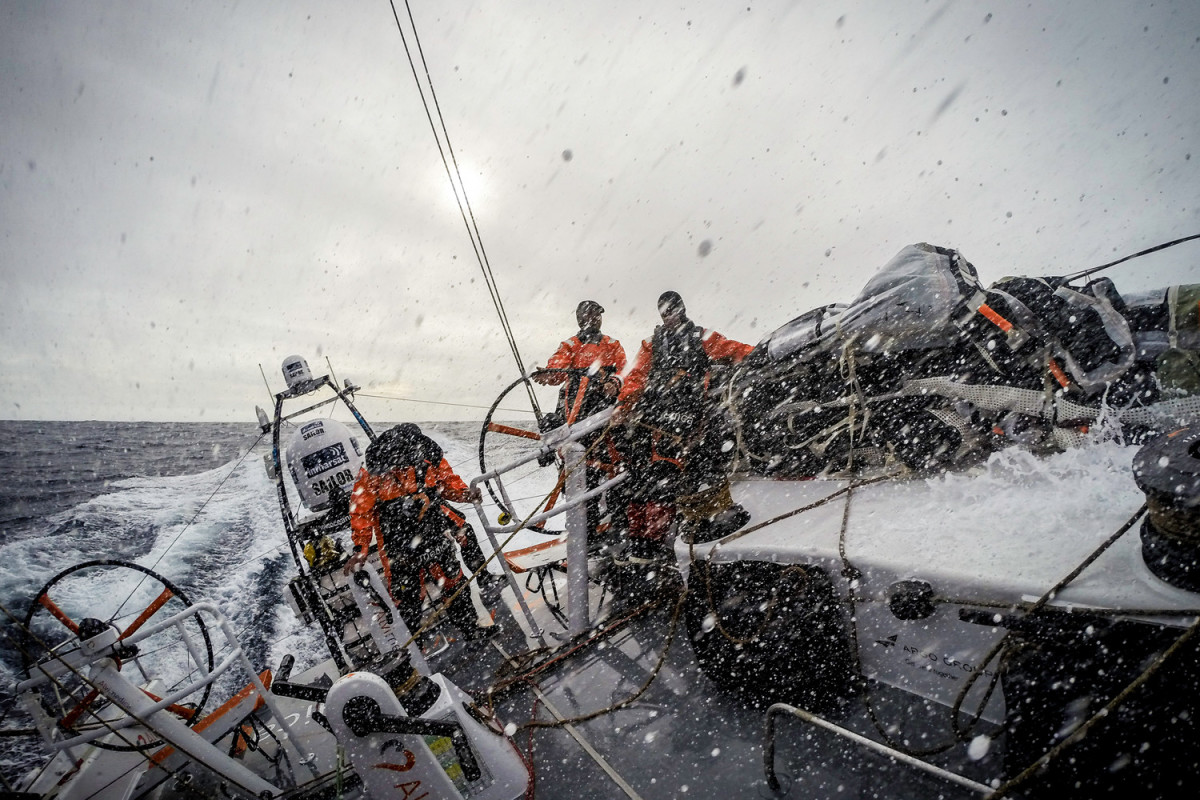
Constant spray across the deck in fast downwind sailing conditions.
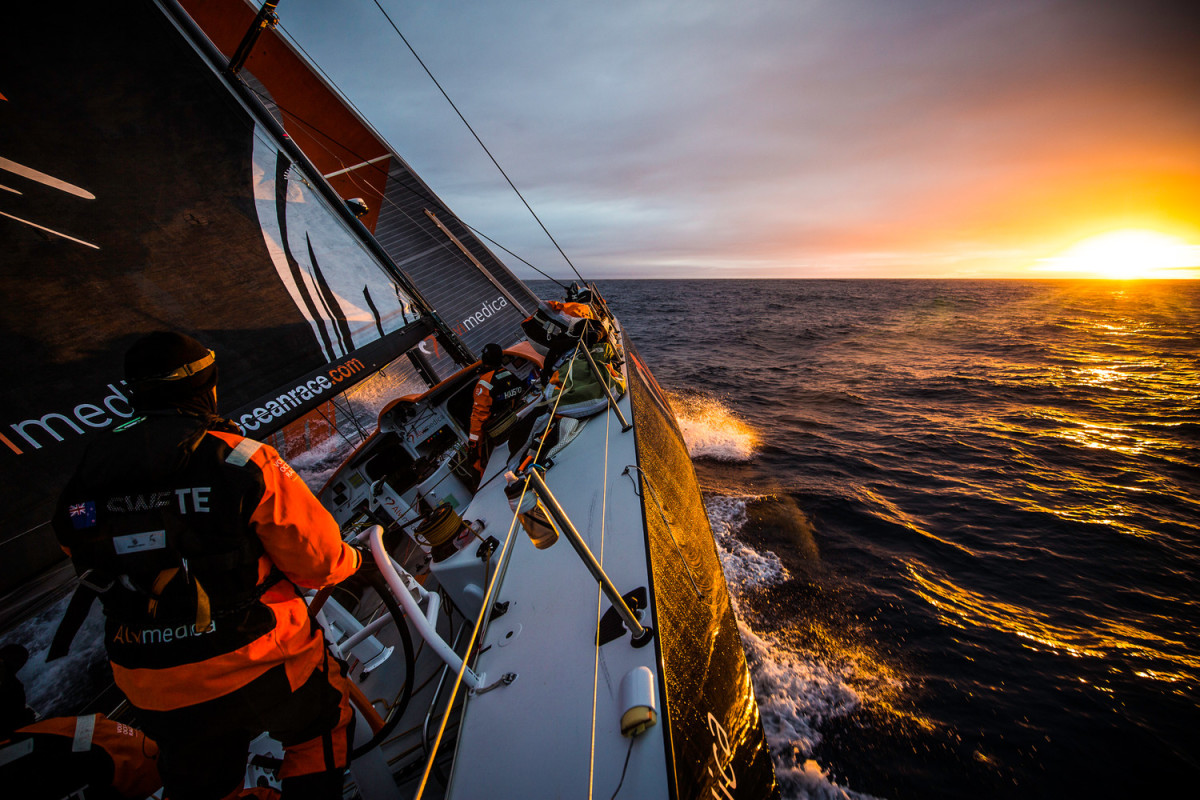
With just 650 miles to Cape Town, the sailing slows considerably as a high-pressure system moves in from the west.
